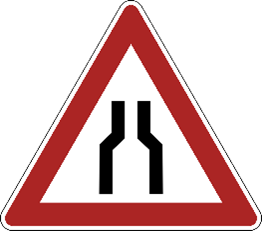This New Year has reminded us of a powerful fundamental principle in practice management and marketing.
It started with an office out West. 2020 was a bad year for them. There was COVID, of course, but there had also been repeated staff turnover and other issues. A once busy office in an upscale mall, it had seen better days. The doctor, staff, and I just could not find a way to get the office going like it once was. New patients had decreased to a trickle. We tried one thing and then another – nothing worked. With little fanfare, sometime in late fall, the lead doctor finally resolved a long-term personal challenge that had been haunting him for years. Not much seem to change in the office, but when I got the numbers for January and plotted them, they were literally off the chart. Somehow, doing nothing really that different, the office saw its highest number of new patients since it began, over 20 years ago.
Just last week, we had another reminder. Over in another part of the country, an office had been struggling with some recent procedural changes, and December and January (last month) saw its lowest new patient numbers in years. Ordinarily a high volume two doctor office, the first week of February wasn’t looking any better. We got together on a conference call to sort things out. Then, the team got together for a comprehensive meeting with doctors and staff and worked out confusions and log jams, focused on the mission and its WHY. Just a few days ago, the second week of February, they reported their highest number of new patients in months.
What does this tell us?
A few years back I wrote an article that I think explains this phenomenon.
== == == == == == == == ==
What Do You Think About
When the Phone Rings?

You are sitting there, trying to finish your notes. You hear your phone ring. You are a bit behind. Maybe slightly irritated by an arbitrary denial of an insurance company and you haven’t yet planned out tonight’s evening with the family, spouse, or friend.
The phone rings again.
What are your thoughts? What are your feelings?
Do you kinda wish it wouldn’t ring? Is it a bit of an interruption? Do-you-just-want-to-answer- the – dang-phone-to-stop-the-ringing-so-you-can-get-back-to-your-work?
Essentially, your thought is “Stop.” It is: “Don’t call me.” “Phone, don’t ring, don’t interrupt me!” I am sure this has happened to you – even if ever so slightly or subconsciously.
Now, imagine if your front desk has these thoughts when the phone rings?
To some degree, even the most devoted and hard-working staff can reactively feel put upon by phone calls. Or, in fact, by walk-ins. Or, in fact, by any patient encounter. I have seen this happen on the front desk when the doctor was busy with patients. But remember, this can happen with even the most ethical team member, including you! I have seen doctors do this often. (Extreme examples: “Oh, only two patients coming in on Saturday, go ahead reschedule them. It is MY office, and I can do what I want.”)
Our thoughts can and do determine our behavior and affect how we treat others. Our environment mirrors our thoughts.

Going back to your front desk, realize that the staff on the front desk have tremendous control over the office, nearly as much as the doctor does. The front desk can be a magnet for your patients and attract or repel them.
When the phone rings, you want your front desk, and all staff, including yourself, thinking “YES.” “Call me. Phone – ring now!” “I can hardly wait to talk to this person and see how they are. I am interested in them and how they are doing. I want to help get them to come in for care — and their family too.” “They must be really really cool and nice if they are calling us.” “I WANT to know more about them.” “I am grateful for their call and appreciate the effort they made in calling us.”
These are good thoughts. These are positive thoughts that can help bring in more patients.
You can practice this with your staff at a team meeting.
For example, someone acts as the prospective patient calling. The person acting as the front desk assistant should answer the phone with the attitude of really not wanting to talk to the person. Act it up. This can be funny. Try it a few times.
Then, do the same rehearsal with the front desk assistant positively anticipating the phone call, wanting the phone to ring, and then eagerly answering and talking to the prospective patient.
Keep the role-playing brief. You can and should do it again. It should be fun and act as a reminder to one and all that we should want to meet new people, talk to existing patients, and look forward to phone calls. We can always dismiss the occasional telemarketer or wrong number.
This can also be rehearsed in other types of patient encounters, from taking the new patient back to the exam room, sitting down to do a financial consultation, or checking a patient out and collecting their payments.
And speaking of how our environment does mirror us, here is a little trick you can use. Get a real mirror, about 4 inches by 4 inches, and put it at the front desk counter so that the team member can see it. You can write something on it like: “Are My Teeth Showing?” “Am I Smiling?” And staff, you can also put one of these in your doctor’s office on any day that he is feeling grumpy. It applies to us all.
So, the next time the phone rings, smile. Be interested and curious in who is taking the time to call. Make your thoughts happy so they help create an office that is brilliant, colorful, and full of happy patients.
Ed





